Myanmar protests: Police use water cannon on demonstrators
Disturbing footage of brutal scenes is filtering out from a divided country as protests against the military ramped up and martial law was declared.
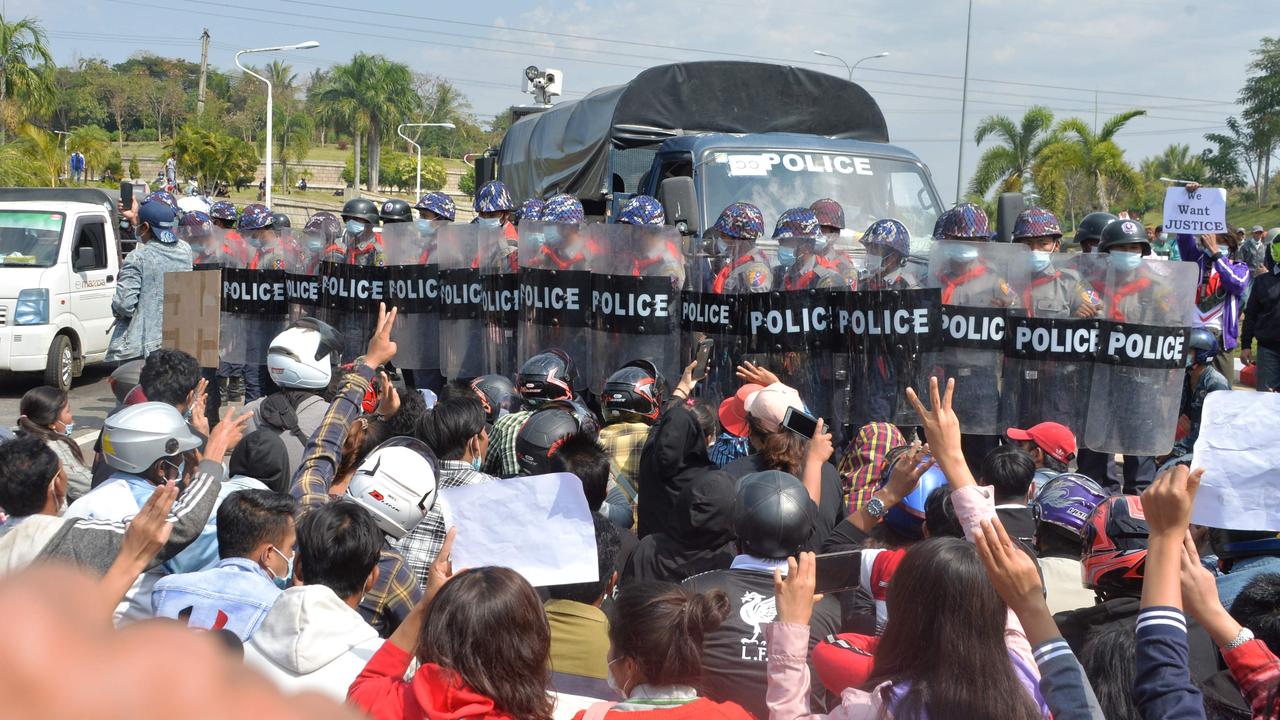
Police in Myanmar’s capital resorted to extreme measures on Monday to control tens of thousands of people as mass demonstrations raged across the country for a third day.
Heavily armed officers wearing riot gear and holding shields clashed with protesters in Nay Pyi Taw, aiming water cannon at those railing against the military takeover of the southeast Asian nation.
Several were injured during the stand-off, with one witness sharing a disturbing video of a protester collapsing, writing: “A guy goes down bleeding at the end of the clip. Such use of force and proximity of the water cannon to civilians is cause for serious concern.”
She called it an unlawful use of water cannon according to UN guidance, which says the tactic should not “target persons at short range owing to the risk of causing permanent blindness or secondary injuries if persons are propelled energetically by the water jet.”
Now in #Naypyidaw. Police use water canons against protesters. A guy goes down bleeding at the end of the clip. Such use of force and proximity of the water cannon to civilians is cause for serious concern. #WhatsHappeningInMyanmar #Myanmarcoup #CivilDesobedienceMovement pic.twitter.com/i1bz0MwiPt
— Rin Fujimatsu (@rinfujimatsu) February 8, 2021
The scenes were recorded as Myanmar’s army declared martial law in its biggest cities, imposing an overnight curfew from 8pm to 4am and banning gatherings of more than five people in an effort to stop the backlash against the coup.
Southeast Asian politicans urged security forces in the country to respect the people’s right to peaceful protest and refrain from violence.
“As peaceful demonstrations grow, the risk of violence is real. We all know what the Myanmar army is capable of: mass atrocities, killing of civilians, enforced disappearances, torture, and arbitrary arrests, among others,” said Tom Villarin, a Board Member of ASEAN Parliamentarians for Human Rights (APHR).
“It is crucial that in the next few days, ASEAN and the international community use all their leverage to ensure the Myanmar army refrains from all forms of violence, and guarantees the safety of the peaceful protesters.”
RELATED: Video captures shots fired at protesters
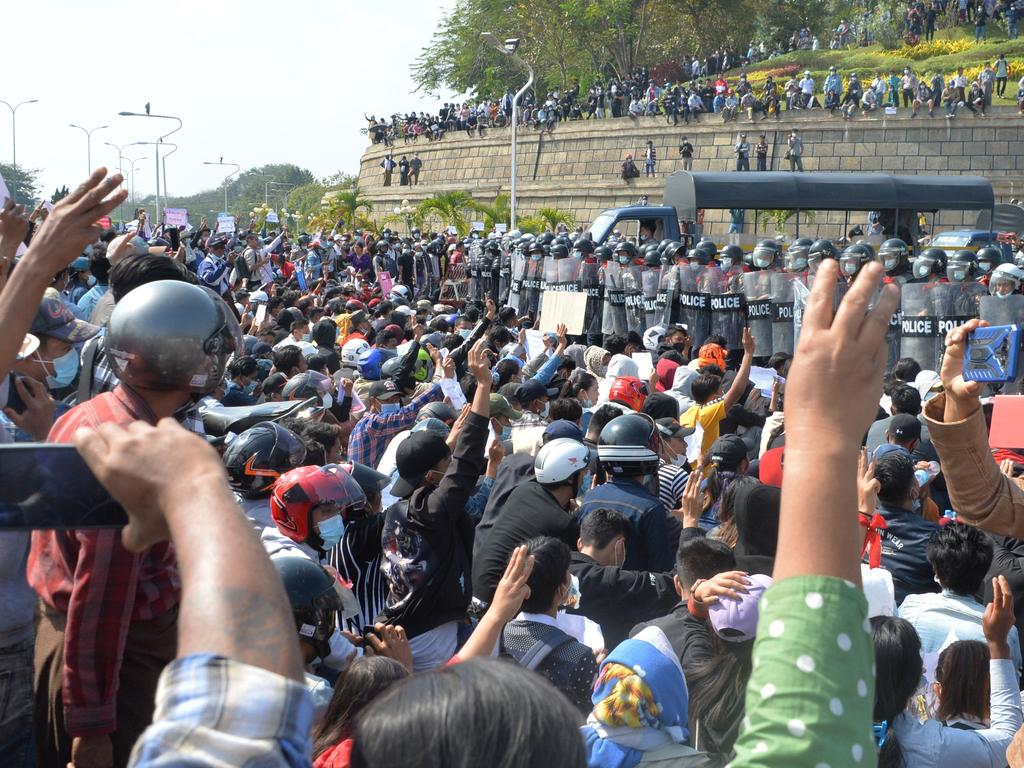
Monday’s pro-democracy demonstrations came a day after Myanmar’s largest protest in decades, which saw activists wearing the red colour of the ousted National League for Democracy (NLD) demanding the release of deposed leader Aung San Suu Kyi.
Onlookers were forced to duck for cover as shots were fired and armed, uniformed soldiers moved to break up protests in the southeastern town of Myawaddy, near the border with Thailand.
#Myanmar: Amazing video to grasp the scale of the peaceful anti-coup protest around Sule pagoda in #Yangon - Sent by friends now rushing to join the march, credits Nyein Chan Wyann. #WhatsHappeningInMaynmar #FightForDemocracy #Myanmarcoup pic.twitter.com/A1jh567cSn
— Sara Perria (@Sara_Perria) February 8, 2021
Protesters poured into Yangon, Myanmar’s largest city, waving red balloons and holding up photos of Ms Suu Kyi while motorists blew horns during the nationwide strike.
The military seized power from the government last week just as a new session of parliament was due to open, arresting the country’s leader and top politicians while claiming without evidence that November’s elections were fraudulent.
RELATED: Aung San Suu Kyi urges citizens to protest
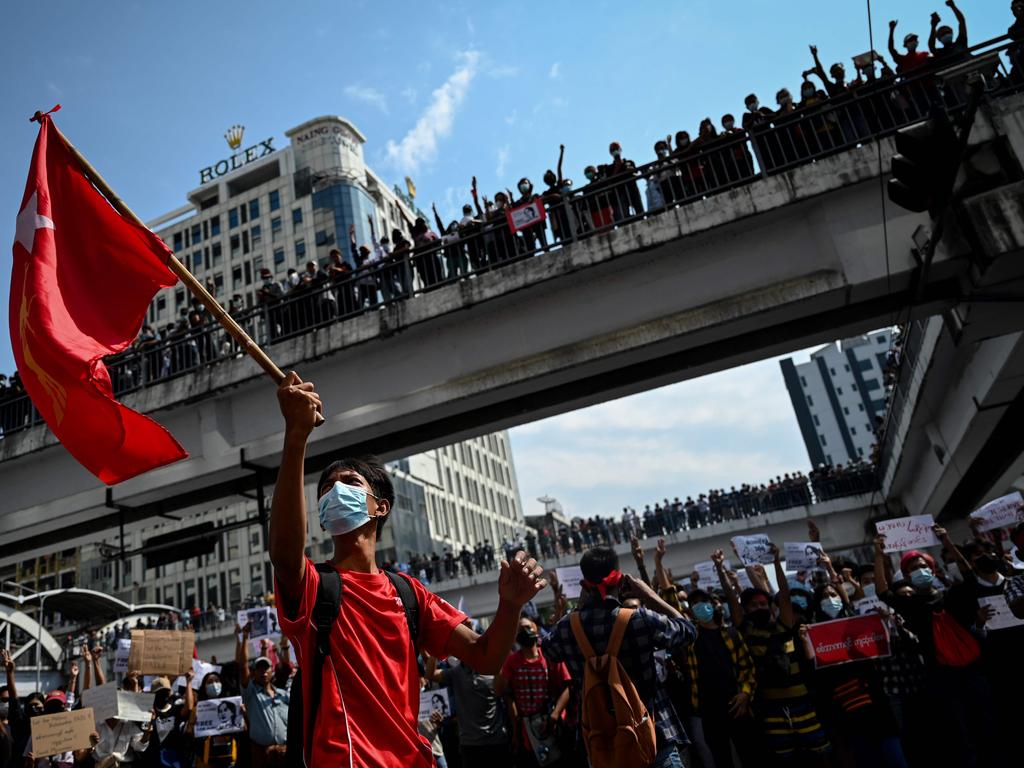
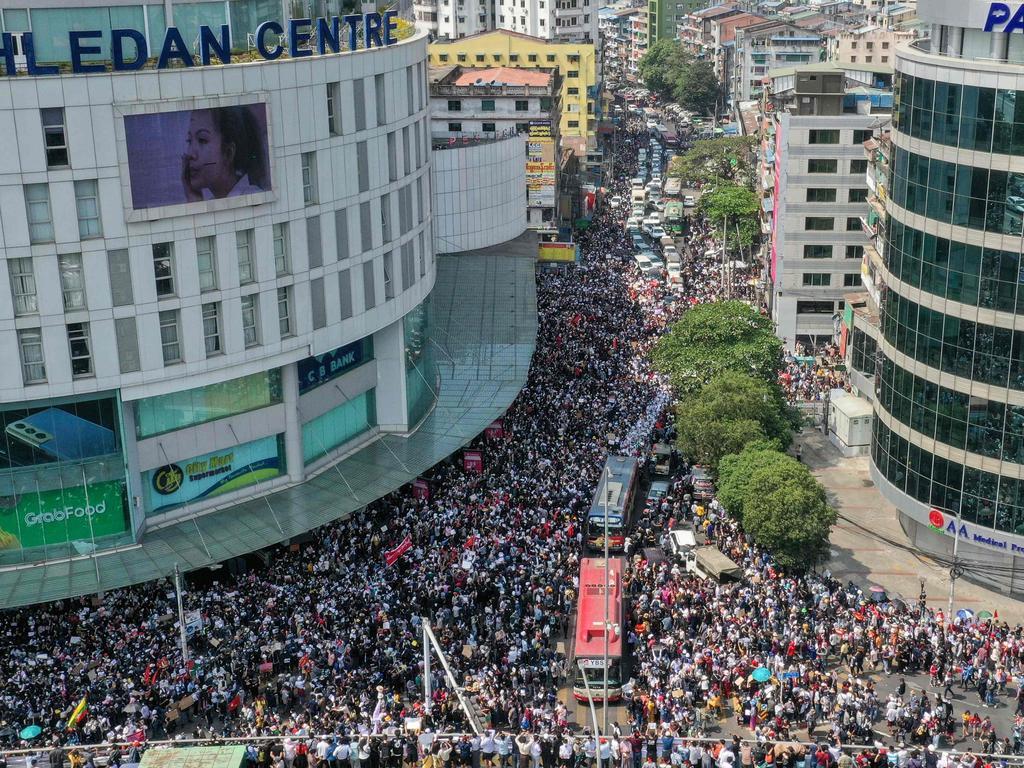
State TV warned that “action” would be taken against protesters who break the law, accusing activists of threatening force “using the excuse of democracy and human rights”.
“Action must be taken according to the law with effective steps against offences which disturb, prevent and destroy the state’s stability, public safety and the rule of law,” said a statement read out on MRTV.
Ms Suu Kyi has been charged with possessing allegedly illegally imported walkie talkies, and is under house arrest along with President Win Myint and senior members of the NLD party.
The army has handed power to commander-in-chief Min Aung Hlaing and declared a year-long state of emergency in Myanmar.
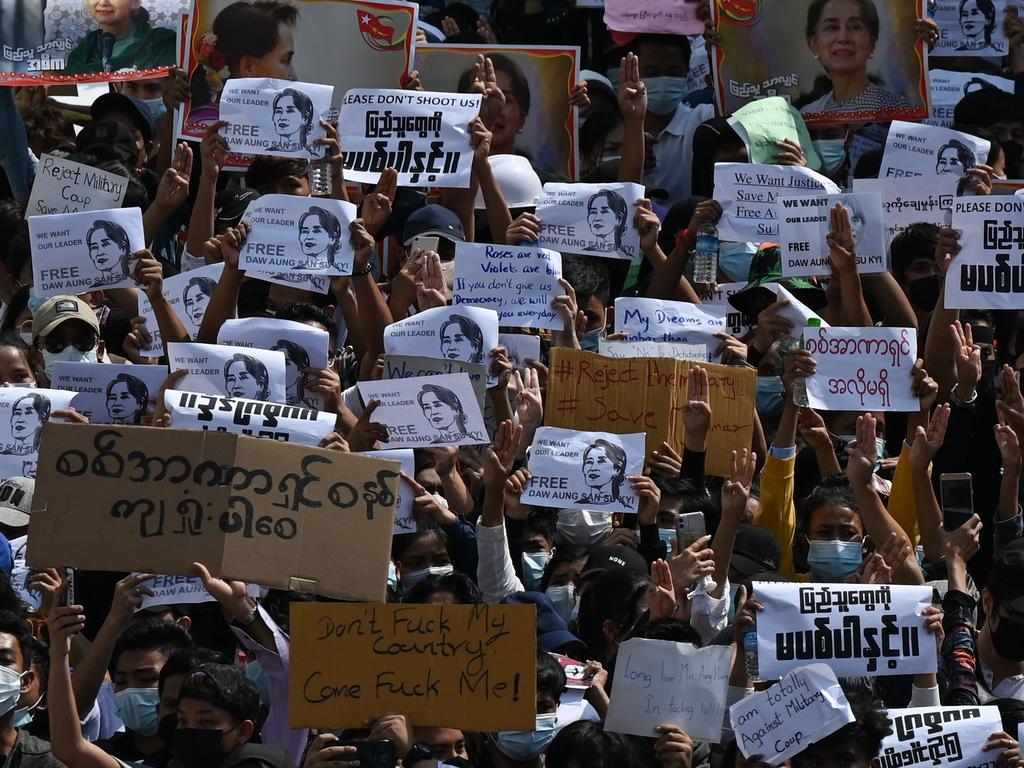
Cities including Mandalay and Yangon also reported large numbers of protesters as teachers, lawyers and government workers joined the demonstrations, according to BBC Burmese.
“Today, we, professionals - especially civil servant professionals such as doctors, engineers and teachers — came out to show that we are all together in this. Our objective is the same — to make the dictatorship fall,” one doctor who did not want to be named told the BBC.
Kyaw Zeyar Oo told the BBC that two vehicles sprayed protesters in Nay Pyi Taw with “no prior warning” while “the crowd was peacefully protesting”.
While there are no clear leaders of the protests, they are gaining in momentum as demonstrators massively outnumbered officers over the weekend.
The military has replaced ministers and initially blocked sites including Facebook, Twitter and Instagram, but the internet ban has now been lifted.
— With wires



